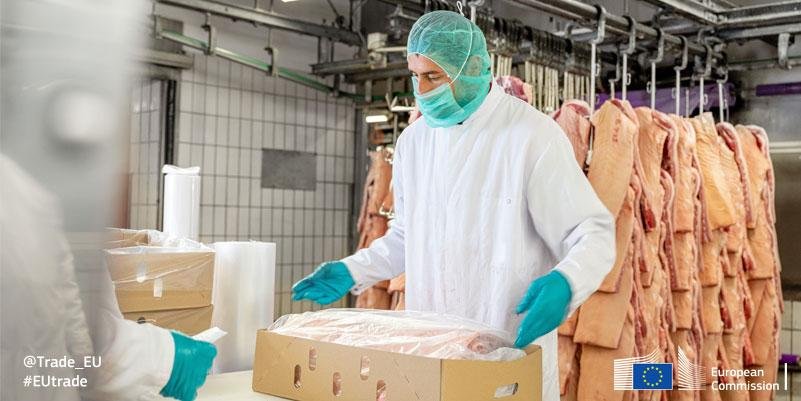Germany’s meat sector faces unprecedented obstacles in 2025. The confirmation of Foot-and-Mouth Disease (FMD) on January 10 in a water buffalo farm near Berlin has triggered seismic disruptions throughout the country’s livestock industry. This marks the first FMD case in Germany since 1988, sending shockwaves through agricultural communities that had grown accustomed to disease-free status.
The financial implications loom large. Germany promptly lost its coveted recognition as “free from foot-and-mouth disease without vaccination” from the World Organization for Animal Health. This status forfeiture means German producers confront export barriers likely extending well beyond the minimum three-month restriction period. Several nations including Canada, Mexico, South Korea, the United States, and the United Kingdom have already implemented import constraints on German animal products. The economic fallout defies simple calculation.
While technically the principle of regionalization permits continued shipments to EU member states from unaffected German regions, practical realities tell another story. Many European neighbors have nevertheless declined German pork deliveries despite regulatory allowances. This contradiction highlights the gap between policy frameworks and market behaviors during disease events.
The Brandenburg outbreak arrived with perplexing timing, catching industry veterans off guard. No substantial warning signs preceded the January confirmation, contributing to the intense psychological impact on German pig farmers who have weathered consecutive challenges in recent years. The sudden appearance in water buffaloes rather than traditional livestock added an unusual dimension to an already complex situation.
Compounding these difficulties, Germany confronts multiple concurrent disease threats impacting various livestock segments. African Swine Fever (ASF) continues challenging pork producers, while poultry markets struggle against both avian influenza and Newcastle Disease disruptions. The cattle sector hasn’t escaped unscathed either, with FMD joining Bovine Viral Diarrhea and tuberculosis in constraining production capabilities.
Adaptation strategies have emerged despite the turbulence. Industry experts suggest pursuing more targeted geographical trade restrictions instead of sweeping national bans. Enhanced vaccination protocols represent another promising avenue – though implementing them requires careful coordination among stakeholders who occasionally harbor divergent priorities. Redirecting product toward domestic consumption offers a partial remedy for export losses, but scaling this approach demands creative marketing initiatives.
The export landscape transformation has catalyzed opportunity for competing nations. As Germany struggles with market access, other pork-producing countries position themselves to fill supply gaps in previously German-dominated import markets. This reshuffling of international trade flows will inevitably alter price structures and relationship dynamics throughout Europe’s meat supply networks.
German agriculture officials responded to the initial outbreak with swift containment measures. The Friedrich-Loeffler-Institut, Germany’s national reference laboratory, verified the case immediately following detection, after which authorities implemented rigorous control and protection protocols. Whether these interventions worked effectively remains uncertain, as secondary outbreaks would further complicate recovery timelines.
Looking ahead, industry resilience depends on creative problem-solving. Companies investing in superior disease prevention systems gain competitive edge compared to those maintaining standard approaches. Diversification of market portfolios provides insulation against export disruption, while consumers may benefit from enhanced domestic availability of previously export-designated products.
The Brandenburg FMD discovery sadly coincided with multiple other disease challenges in German livestock production. In years past, producers might have navigated a single disease issue successfully, but the confluence of multiple pathogen threats creates multiplicative rather than merely additive difficulties.
Water buffalo, though not a major German livestock segment, served as the entry point for FMD reintroduction to the country. This underscores the importance of comprehensive surveillance across all cloven-hoofed animal populations, even those considered peripheral to mainstream agriculture. Small oversights can precipitate substantial consequences when dealing with highly transmissible pathogens.
Germany’s path forward requires collaborative innovation between government agencies, producer organizations, and scientific institutions. Companies that embrace this disruption as catalyst for operational transformation may ultimately emerge stronger, though the journey promises further complications before improvement becomes visible.

